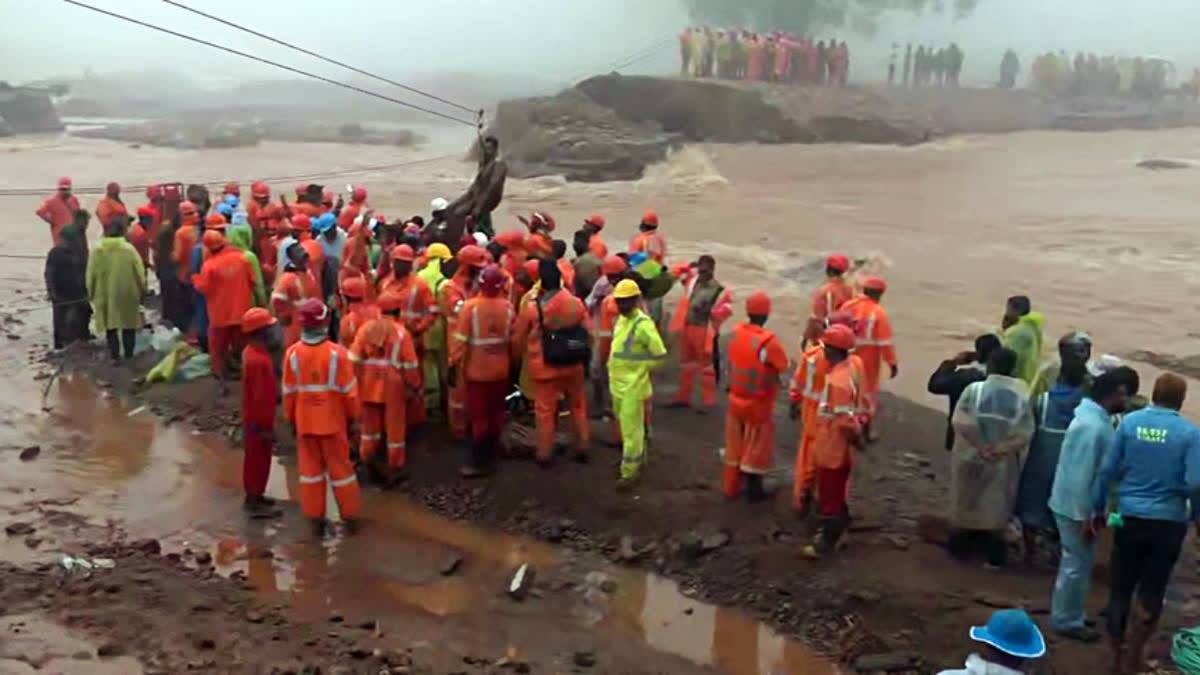New Delhi:Climate change, fragile terrain and loss of forest cover created a perfect recipe for the disastrous landslides that struck Kerala's Wayanad district, according to studies conducted over the years. Extremely heavy rain triggered a series of landslides in the hilly areas of Kerala's Wayanad district early on Tuesday, leaving at least 123 people dead and 128 injured. Many were feared trapped under the debris.
According to the landslide atlas released by the Indian Space Research Organisation's (ISRO) National Remote Sensing Centre last year, 10 out of the 30 most landslide-prone districts in India were in Kerala, with Wayanad ranked 13th. It said 0.09 million square kilometres in the Western Ghats and the Konkan hills (Tamil Nadu, Kerala, Karnataka, Goa, and Maharashtra) were prone to landslides.
"The vulnerability of inhabitants and households is more significant in the Western Ghats due to the very high population and household density, especially in Kerala," the report read. A study published by Springer in 2021 said all landslide hotspots in Kerala were in the Western Ghats region and concentrated in Idukki, Ernakulam, Kottayam, Wayanad, Kozhikode and Malappuram districts.
It said about 59 per cent of total landslides in Kerala occurred in plantation areas. A 2022 study on depleting forest cover in Wayanad showed that 62 per cent of forests in the district disappeared between 1950 and 2018 while plantation cover rose by around 1,800 per cent.
The study, published in the International Journal of Environmental Research and Public Health, said around 85 per cent of the total area of Wayanad was under forest cover until the 1950s. According to scientists, climate change was increasing the possibility of landslides in the Western Ghats, one of the eight "hottest hotspots" of biological diversity in the world.
S Abhilash, director of the Advanced Centre for Atmospheric Radar Research at Cochin University of Science and Technology (CUSAT), told PTI that warming of the Arabian Sea was allowing the formation of deep cloud systems, leading to extremely heavy rainfall in Kerala in a shorter period and increasing the possibility of landslides.
